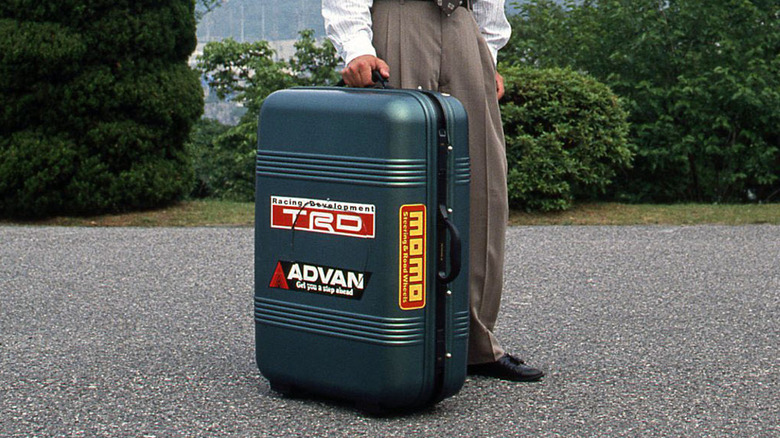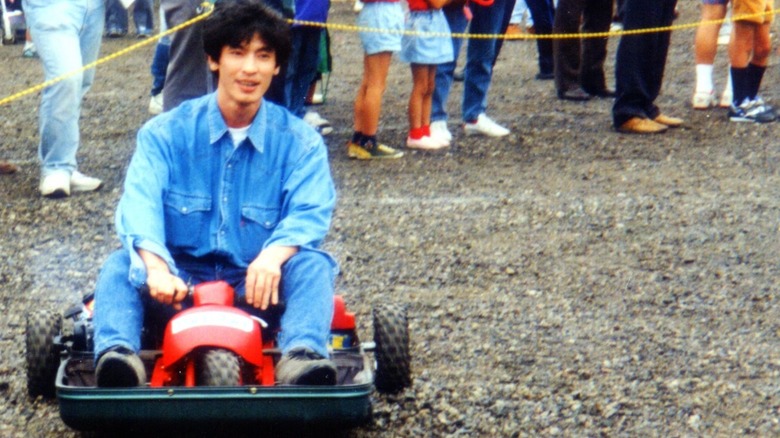This Tiny Mazda Fit In A Suitcase, And Looked Like Something From Mario Kart
1991 was a big year for Mazda. It made history at the 24 Hours of Le Mans by becoming the first Japanese brand to win the Grand Prix, bringing home the gold with the rotary-powered Mazda 787B. The same year saw the arrival of the Mazda HR-X, a concept car powered by a hydrogen rotary engine. The new decade also brought with it Fantasyard, a competition where different departments of the company strived to develop the most creative car concept. The winning vehicle for 1991 was an unconventional compact suitcase car, developed by Mazda's manual transmission testing and research unit.
Mazda's dinky suitcase car packed away neatly into a 57x75-centimeter (22.5x30 inches) Samsonite bag, the largest hardshell case the engineers could find. Together with a pocket bike, the case formed the basis of their new creation. Despite its small size, the suitcase car weighed a staggering 32 kilograms (roughly 70 pounds) and could reach surprisingly high speeds.
When you were ready to ride, the three-wheeled machine was quick to set up. All you had to do was shift the front wheel into position by removing part of the suitcase, then attach the seat and rear wheels. Once assembled, the kart-like creation could hit speeds of around 18 mph courtesy of its 34cc, 1.67-horsepower engine. The car's small size also offered a low center of gravity, making it relatively easy to handle.
Mazda's suitcase car never hit the market
Mazda's smallest car wasn't really designed with mainstream markets in mind. Despite its size, the car was actually pretty bulky and heavy, so it wasn't especially practical or portable. It was the product of an in-house competition come to life, favouring innovation and technical prowess over practicality. Because of that, the suitcase car didn't end up being mass-produced and is one of the rarest Mazdas ever made.
Only three of the suitcase cars were made. There was the original model created in the wake of its design winning Fantasyard, a European replica, and an American model. The European model was created for a presentation at the 1991 Frankfurt International Motor Show, and has since mysteriously disappeared. The original suitcase car was accidentally destroyed, making the model built for the United States the only one that's still in existence.
Although the suitcase car didn't result in a commercially available cool three-wheeler you could drive on the street, it was still a success for Mazda in its own way. The quirky packaway trike captured the media's attention, highlighting the Japanese automaker's fun, boundary-pushing designs. The car was in keeping with Mazda's overall ethos and some of their flagship creations — like the 1931 Mazda-Go, another unusual three-wheeler — making it a particularly valuable marketing opportunity.

